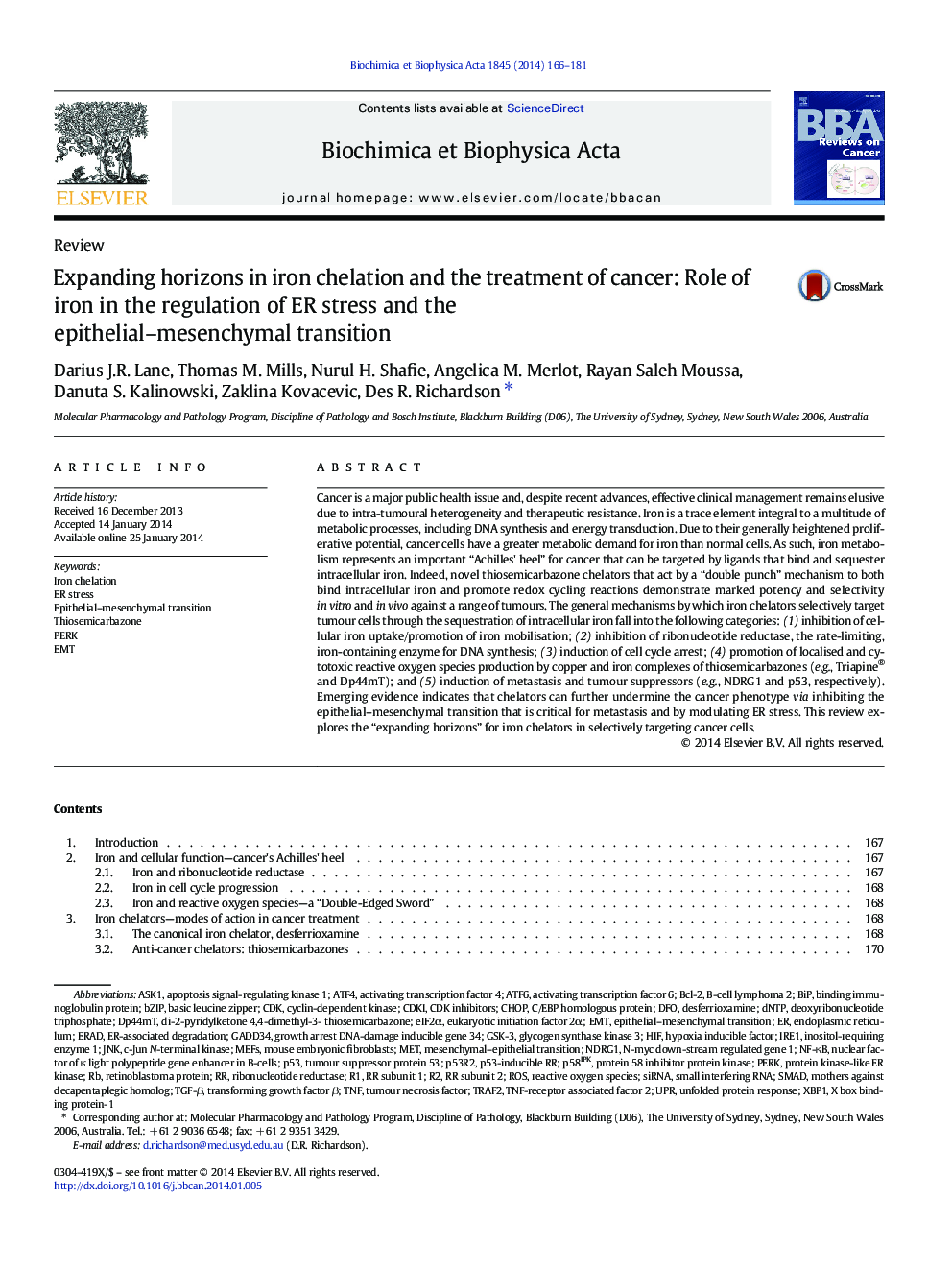| Article ID | Journal | Published Year | Pages | File Type |
|---|---|---|---|---|
| 10895569 | Biochimica et Biophysica Acta (BBA) - Reviews on Cancer | 2014 | 16 Pages |
Abstract
Cancer is a major public health issue and, despite recent advances, effective clinical management remains elusive due to intra-tumoural heterogeneity and therapeutic resistance. Iron is a trace element integral to a multitude of metabolic processes, including DNA synthesis and energy transduction. Due to their generally heightened proliferative potential, cancer cells have a greater metabolic demand for iron than normal cells. As such, iron metabolism represents an important “Achilles' heel” for cancer that can be targeted by ligands that bind and sequester intracellular iron. Indeed, novel thiosemicarbazone chelators that act by a “double punch” mechanism to both bind intracellular iron and promote redox cycling reactions demonstrate marked potency and selectivity in vitro and in vivo against a range of tumours. The general mechanisms by which iron chelators selectively target tumour cells through the sequestration of intracellular iron fall into the following categories: (1) inhibition of cellular iron uptake/promotion of iron mobilisation; (2) inhibition of ribonucleotide reductase, the rate-limiting, iron-containing enzyme for DNA synthesis; (3) induction of cell cycle arrest; (4) promotion of localised and cytotoxic reactive oxygen species production by copper and iron complexes of thiosemicarbazones (e.g., Triapine® and Dp44mT); and (5) induction of metastasis and tumour suppressors (e.g., NDRG1 and p53, respectively). Emerging evidence indicates that chelators can further undermine the cancer phenotype via inhibiting the epithelial-mesenchymal transition that is critical for metastasis and by modulating ER stress. This review explores the “expanding horizons” for iron chelators in selectively targeting cancer cells.
Keywords
GADD34UPRIRE1XBP1eIF2αATF6GSK-3HIFdNTPASK1TRAF2DesferrioxamineNF-κBSMADp53R2CDKIDp44mTNDRG1protein kinase-like ER kinaseTNFTGF-βmothers against decapentaplegic homologP58IPKMEFsCDKJnkbZIPp53Bcl-2ATF4DFOERADBiPC/EBP homologous proteinc-Jun N-terminal kinaseSmall interfering RNAROSsiRNAinositol-requiring enzyme 1ER stressMesenchymal–epithelial transitionTransforming growth factor βER-Associated Degradationdeoxyribonucleotide triphosphateEMTCHOPThiosemicarbazoneRibonucleotide reductasebasic leucine zipperendoplasmic reticulumeukaryotic initiation factor 2αtumour necrosis factorHypoxia Inducible Factoractivating transcription factor 4activating transcription factor 6B-cell lymphoma 2METcdk inhibitorsmouse embryonic fibroblastsUnfolded protein responseBinding immunoglobulin Proteinretinoblastoma proteinPERKIron chelationapoptosis signal-regulating kinase 1cyclin-dependent kinaseEpithelial–mesenchymal transitionglycogen synthase kinase 3Reactive oxygen species
Related Topics
Life Sciences
Biochemistry, Genetics and Molecular Biology
Cancer Research
Authors
Darius J.R. Lane, Thomas M. Mills, Nurul H. Shafie, Angelica M. Merlot, Rayan Saleh Moussa, Danuta S. Kalinowski, Zaklina Kovacevic, Des R. Richardson,
